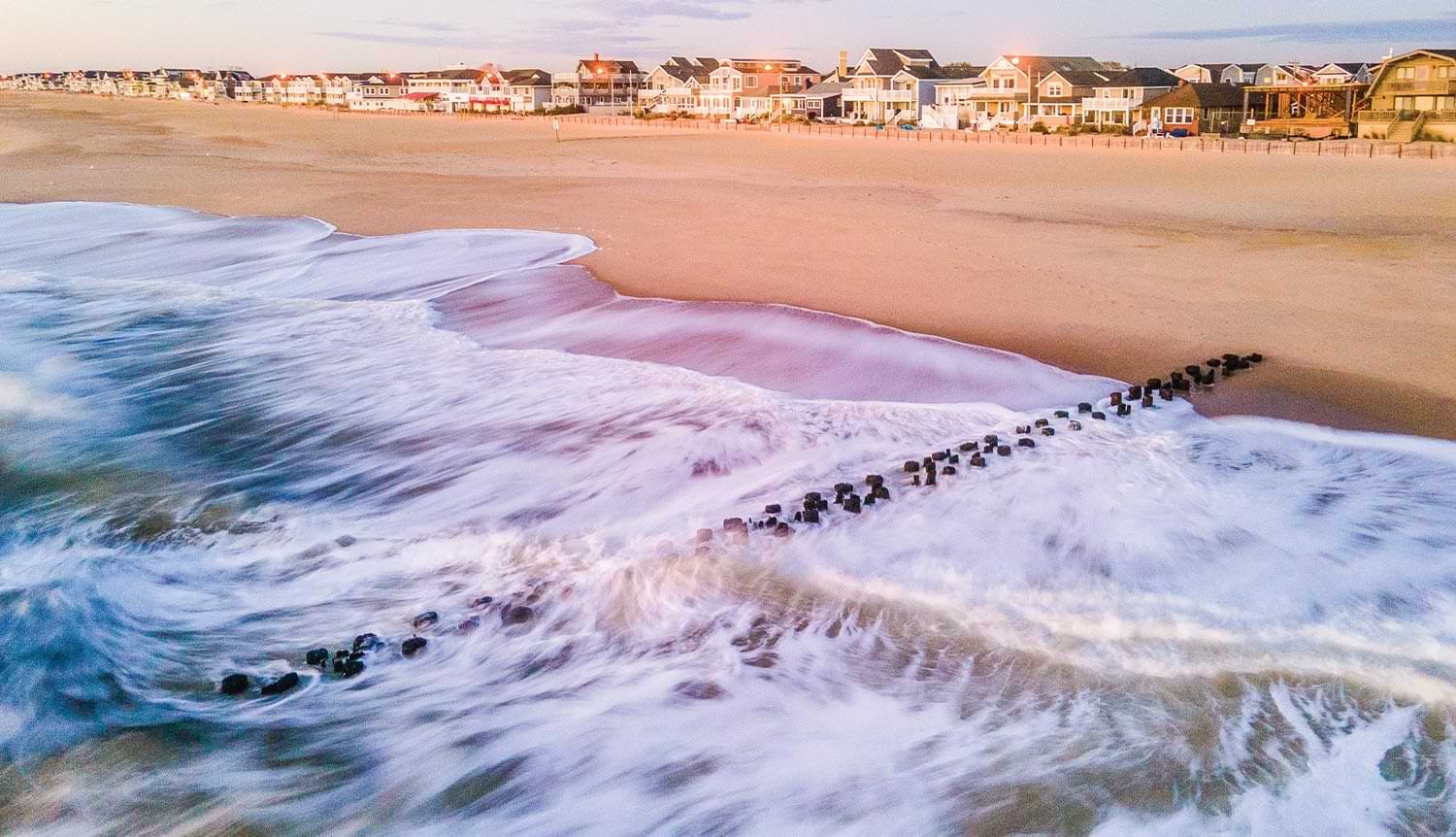
 Urban Coast Institute
Urban Coast Institute
Leading the Way in Coastal Resilience
ith support from $1.5 million in state funding, Monmouth’s Urban Coast Institute (UCI) is leading a collaborative effort aimed at enhancing coastal resilience in the Garden State.
Joining faculty and staff from Monmouth’s UCI in the effort are experts from the Montclair State University Earth and Environmental Studies Department; the New Jersey Institute of Technology Center for Natural Resources; Rutgers University’s Institute of Earth, Ocean, and Atmospheric Sciences and Jacques Cousteau National Estuarine Research Reserve; the Stevens Institute of Technology Coastal Engineering Research Lab; and the Stockton University Coastal Research Center.
Thomas Herrington, Ph.D., associate director of the UCI and principal investigator for the NJCCRC, said the consortium partners have been informally working together on different aspects of coastal resilience ever since Superstorm Sandy devastated the New Jersey coast in 2012.
Now, thanks to funding sponsored and supported by New Jersey State Sen. Vin Gopal, New Jersey’s fiscal year 2022, 2023, and 2024 budgets each included $500,000 to establish the NJCCRC as a formal group and support its work.
“Sandy was a big wake-up call for us because we thought we had the protection we needed, but the storm surge that occurred interacted with our coastal bays in unexpected ways.”
—Thomas Herrington, Ph.D., associate director of the UCI
“Sandy was a big wake-up call for us because we thought we had the protection we needed, but the storm surge that occurred interacted with our coastal bays in unexpected ways,” he said. “So, the state made the decision to invest in nature and nature-based features for community resilience in the bays, but we don’t know enough about the system and how it is changing to know what we should be doing.”
The group is focusing its studies on Barnegat Bay—a 42-mile-long arm of the Atlantic Ocean that is home to an eclectic ecosystem of barrier islands, maritime forests, and wildlife—using it as a living laboratory to develop a framework for a real-time observing system that will monitor environmental conditions to measure how the bay system changes over time.
The initial phase, which began in September 2022, focused on pulling from past research and comparing it to new data to create a baseline of the physical processes in the bay, such as the natural movements of sediment and currents. The group is now focused on studying how climate change is impacting those physical processes and determining the effectiveness of resilience efforts such as the restoration of tidal marshes in densely populated areas, among other things.
Part of the goal is to create a robust, dynamic model to monitor how physical changes like sea level rise and shifts in salinity impact the bay system and to determine whether the framework is transferable to other bay systems in the state or the country.
As the NJCCRC enters the next phase of its work, there are plans to assemble an advisory panel of representatives from research organizations, nonprofits, local governments, private sector entities, and other stakeholders. The panel would provide input on NJCCRC’s research priorities and work, with the aim of informing an update of the 2020 New Jersey Scientific Report on Climate Change and put into action the plans detailed in the 2021 New Jersey Climate Change Resilience Strategy and Coastal Resilience Plan.

Panel Explores Lessons Learned Since Superstorm Sandy
